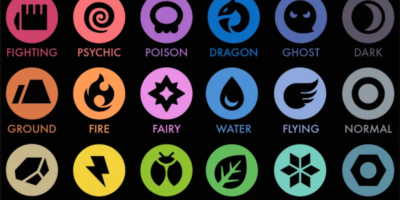Are you hungry? Of course you are; you’re a student. Of course, being a student, you aren’t picky about food. Everybody knows we just live on ramen and ketchup. Still, that isn’t the strangest thing that people eat.
Here are a bunch of things that are still eaten around the world. They seem much weirder than student fare. Some are delicious despite their “weird” factor; others are so undeniably vile that it is a mystery why anyone ever even attempted to eat them.
Hasma
Hasma is a delicacy from China that is made of dried frog fat. Specifically, it is visceral fat found around the frog’s fallopian tubes. To cook it, you should first rehydrate it so it becomes gelatinous. Possibly the oddest thing about hasma is that it is a dessert, which is normally not something you would associate with animal product or frogs. Or, for that matter, fallopian tubes. However, it is apparently slightly sweet by itself, plus it is sweetened with rock sugar. It is an ingredient in sweet soups, which by itself sounds odd to North Americans. In the soup, it serves a similar purpose to tapioca: sweetish, squishy, and pretty pointless.
Traditionally, hasma is supposed to be good for respiratory disorders, so if you have asthma, you know what to do.
Blood Pancakes
Some cultures do not eat blood and do their best to remove it from meat; others, especially European cultures, consider blood to be just another animal product and add it to sausages and other meat dishes. However, Scandinavians take it a step further. Adding to the list of “things that really don’t seem like they should be sweet” is Blodplättar, which is made of normal pancake things like milk, flour, and molasses. Also pork blood. It’s very good for you, being full of iron and such. Serve it with jam, like any other pancake.
So now you know what to do if a vampire drops by for breakfast.
Fugu
Fugu is the meat of the Japanese pufferfish, which is exceptionally poisonous. For some reason, people still want to eat it despite the fact that, if it is incorrectly prepared, it can suffocate you slowly over a period of up to 24 hours while you are still fully conscious. Historically it has been banned in Japan, and currently is very strictly regulated, for obvious reasons.
Only certain organs are toxic so, if they are properly removed, the fish can be safely eaten. The fish itself does not produce the toxin so if it is properly farmed and fed, it will be completely fine. However, purists reject this non-toxic fish. Who doesn’t want their sushi meal to be a brush with a horrible death? Some people have even intentionally eaten the toxic organs not to commit suicide per se, but to show how macho they were. Those guys are now dead, of course, but everyone knows exactly how brave they were, and also their exact IQ.
Steak Tartare
The Mongols managed to take over much of the known world back in the day due to their cavalry. Their horse archers were incredibly deadly and incredibly fast; armies travelled over absurd distances without stopping for days. Of course, this meant that they also had to eat on the move. (They also had to poop on the move, but I won’t go there.)
Steak Tartare nowadays means that the steak is raw, chopped, and flavoured; “tartar” was an old-fashioned word for the Mongols and Asiatic Turkish tribes in Europe. This is because one way their armies liked to prepare food without stopping was to take slices of raw meat and place them under their saddles while riding. This would mash up the meat. At least they would wrap it up, so it wouldn’t actually have horse hair in it (they weren’t barbarians, after all… oh wait.). When they invaded Russia, being basically the only people to ever do so with even marginal success, the Russians decided that the meat thing was a good idea for some inexplicable reason.
The meaning of steak tartare obviously changed over the years, but some people think that the whole horse-squished meat dish is the ancestor of the modern hamburger. That might explain Burger King.
Hákarl
Hákarl is found in Iceland and it basically combines the negative qualities of all of the above. It is made of a fermented shark, and is exactly as vile as it sounds. It tastes strongly of ammonia and fishiness.
To prepare hákarl, start by killing and cleaning a shark, as you would expect. Then, bury it in a gravel pit for several months or, if you are more modern, put it in a container with a drainage hole. Why are you doing this step? To squeeze out the neurotoxin-rich liquids, because of course it contains neurotoxins. It also ferments (a.k.a. rots, because it is a fish) during this time and smells strongly of ammonia. Some people say that back in the day people would pee on it to make it smell less bad. Hákarl isn’t very common nowadays but it is still very much eaten, although probably not peed on. Probably.
After fermenting it and possibly peeing on it, you hang it up to dry for some more months before serving it. There is no “cooking” step.
Traditionally, Hákarl is eaten while drinking very hard liquor. This is not because you have to be drunk to even think about putting it in your mouth, but because the alcohol will mask the taste of the shark.
So there we have it: a dish that has to be treated extensively to render it non-toxic, and which smells so horrible that urine is considered a preferable smell, and tastes so bad that hard liquor is considered a preferable taste. The only reason they invented it was because Icelanders are vikings, and vikings’ main goal is to be more hardcore than anyone else. I think we can all agree that they have succeeded.




Leave a Reply